Temperature-Independent Current Dispersion in 0.15 μm AlGaN/GaN HEMTs for 5G Applications
Abstract
1. Introduction
2. Devices under Study
3. Experimental Results
3.1. Pulsed I-V Curves
3.2. Drain Current Transients
4. Simulation Results
5. Conclusions
Author Contributions
Funding
Data Availability Statement
Acknowledgments
Conflicts of Interest
References
- Yuk, K.; Branner, G.R.; Cui, C. Future directions for GaN in 5G and satellite communications. In Midwest Symposium on Circuits and Systems; IEEE: Boston, MA, USA, 2017; pp. 803–806. [Google Scholar] [CrossRef]
- Meneghini, M.; De Santi, C.; Abid, I.; Buffolo, M.; Cioni, M.; Khadar, R.A.; Nela, L.; Zagni, N.; Chini, A.; Medjdoub, F.; et al. GaN-based power devices: Physics, reliability and perspectives. J. Appl. Phys. 2021, 130, 227. [Google Scholar] [CrossRef]
- Vetury, R.; Zhang, N.Q.; Keller, S.; Misha, U.K. The impact of surface states on the DC and RF characteristics of AlGaN/GaN HFETs. IEEE Trans. Electron Devices 2001, 48, 560–566. [Google Scholar] [CrossRef]
- Wang, F.; Chen, W.; Sun, R.; Wang, Z.; Zhou, Q.; Zhang, B. An analytical model on the gate control capability in p-GaN Gate AlGaN/GaN high-electron-mobility transistors considering buffer acceptor traps. J. Phys. D Appl. Phys. 2020, 54, 095107. [Google Scholar] [CrossRef]
- Wang, Z.; Zhang, Z.; Wang, S.; Chen, C.; Wang, Z.; Yao, Y. Design and Optimization on a Novel High-Performance Ultra-Thin Barrier AlGaN/GaN Power HEMT With Local Charge Compensation Trench. Appl. Sci. 2019, 9, 3054. [Google Scholar] [CrossRef]
- Zagni, N.; Chini, A.; Puglisi, F.M.; Meneghini, M.; Meneghesso, G.; Zanoni, E.; Pavan, P.; Verzellesi, G. Hole Redistribution’ Model Explaining the Thermally Activated RON Stress/Recovery Transients in Carbon-Doped AlGaN/GaN Power MIS-HEMTs. IEEE Trans. Electron Devices 2021, 68, 697–703. [Google Scholar] [CrossRef]
- Meneghesso, G.; Meneghini, M.; Bisi, D.; Rossetto, I.; Cester, A.; Mishra, U.K.; Zanoni, E. Trapping phenomena in AlGaN/GaN HEMTs: A study based on pulsed and transient measurements. Semicond. Sci. Technol. 2013, 28, 074021. [Google Scholar] [CrossRef]
- Joh, J.; del Alamo, J.A. A current-transient methodology for trap analysis for GaN high electron mobility transistors. IEEE Trans. Electron Devices 2011, 58, 132–140. [Google Scholar] [CrossRef]
- Cioni, M.; Zagni, N.; Selmi, L.; Meneghesso, G.; Meneghini, M.; Zanoni, E.; Chini, A. Electric Field and Self-Heating Effects on the Emission Time of Iron Traps in GaN HEMTs. IEEE Trans. Electron Devices 2021, 68, 3325–3332. [Google Scholar] [CrossRef]
- Zagni, N.; Cioni, M.; Chini, A. Effect of Trap-Filling Bias on the Extraction of the Time Constant of Drain Current Transients in AlGaN/GaN HEMTs. In IEEE Workshop on Wide Bandgap Power Devices and Applications (WiPDA); IEEE: Redondo Beach, CA, USA, 2021; pp. 231–235. [Google Scholar] [CrossRef]
- Cardwell, D.W.; Sasikumar, A.; Arehart, A.R.; Kaun, S.W.; Lu, J.; Keller, S.; Speck, J.S.; Mishra, U.K.; Ringel, S.A.; Pelz, J.P. Spatially-resolved spectroscopic measurements of Ec-0.57 eV traps in AlGaN/GaN high electron mobility transistors. Appl. Phys. Lett. 2013, 102, 193509. [Google Scholar] [CrossRef]
- Bisi, D.; Meneghini, M.; de Santi, C.; Chini, A.; Dammann, M.; Bruckner, P.; Mikulla, M.; Meneghesso, G.; Zanoni, E. Deep-level characterization in GaN HEMTs-Part I: Advantages and limitations of drain current transient measurements. IEEE Trans. Electron Devices 2013, 60, 3166–3175. [Google Scholar] [CrossRef]
- Synopsys. Sentaurus SDevice Manual (S-2021.06); Synopsys: Mountain View, CA, USA, 2021. [Google Scholar]
- Zagni, N.; Chini, A.; Puglisi, F.M.; Pavan, P.; Verzellesi, G. The effects of carbon on the bidirectional threshold voltage instabilities induced by negative gate bias stress in GaN MIS-HEMTs. J. Comput. Electron. 2020, 19, 1555–1563. [Google Scholar] [CrossRef]
- Zagni, N.; Puglisi, F.M.; Pavan, P.; Chini, A.; Verzellesi, G. Insights into the off-state breakdown mechanisms in power GaN HEMTs. Microelectron. Reliab. 2019, 100–101, 113374. [Google Scholar] [CrossRef]
- Uren, M.J.; Moreke, J.; Kuball, M. Buffer design to minimize current collapse in GaN/AlGaN HFETs. IEEE Trans. Electron Devices 2012, 59, 3327–3333. [Google Scholar] [CrossRef]
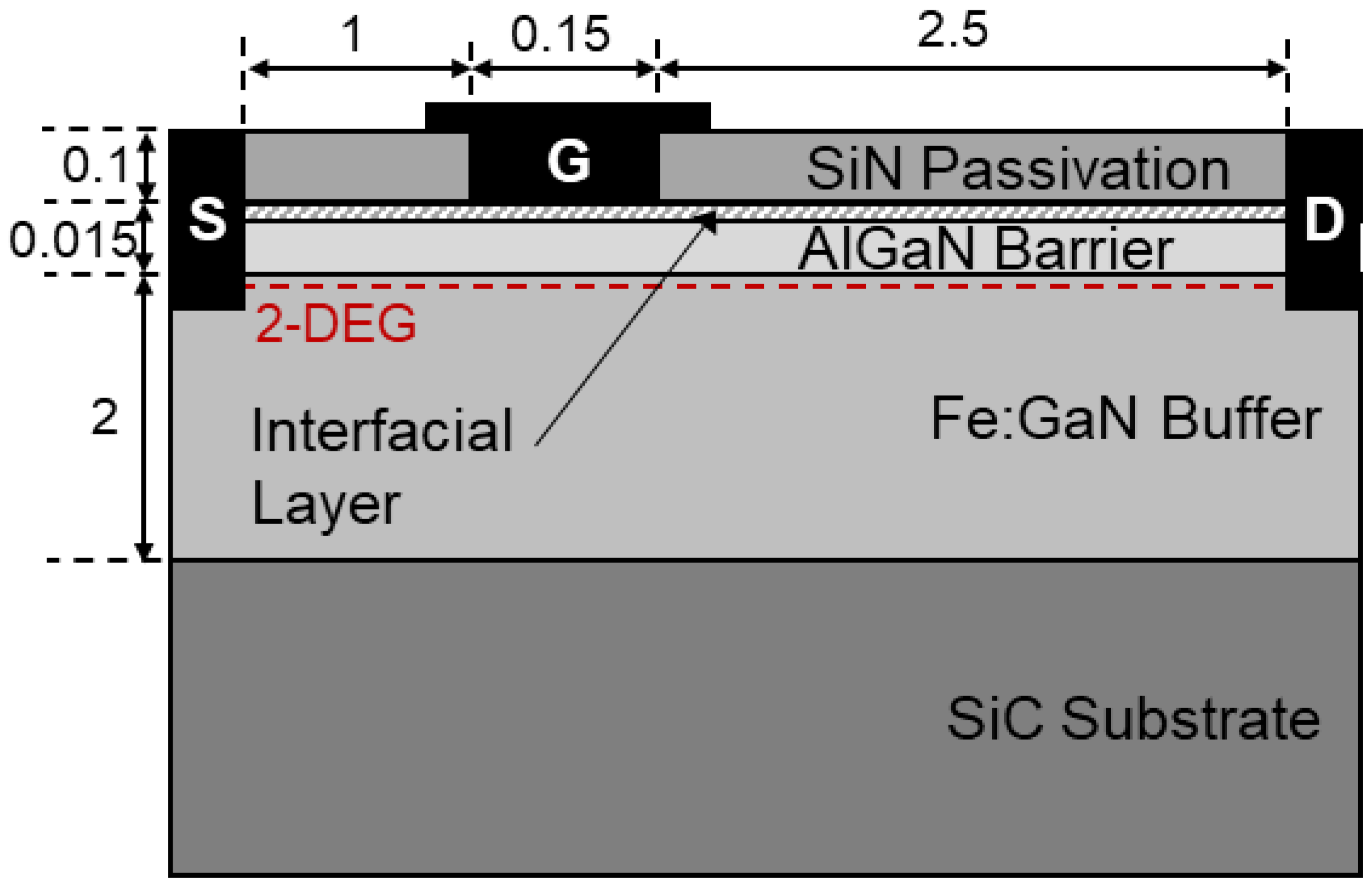

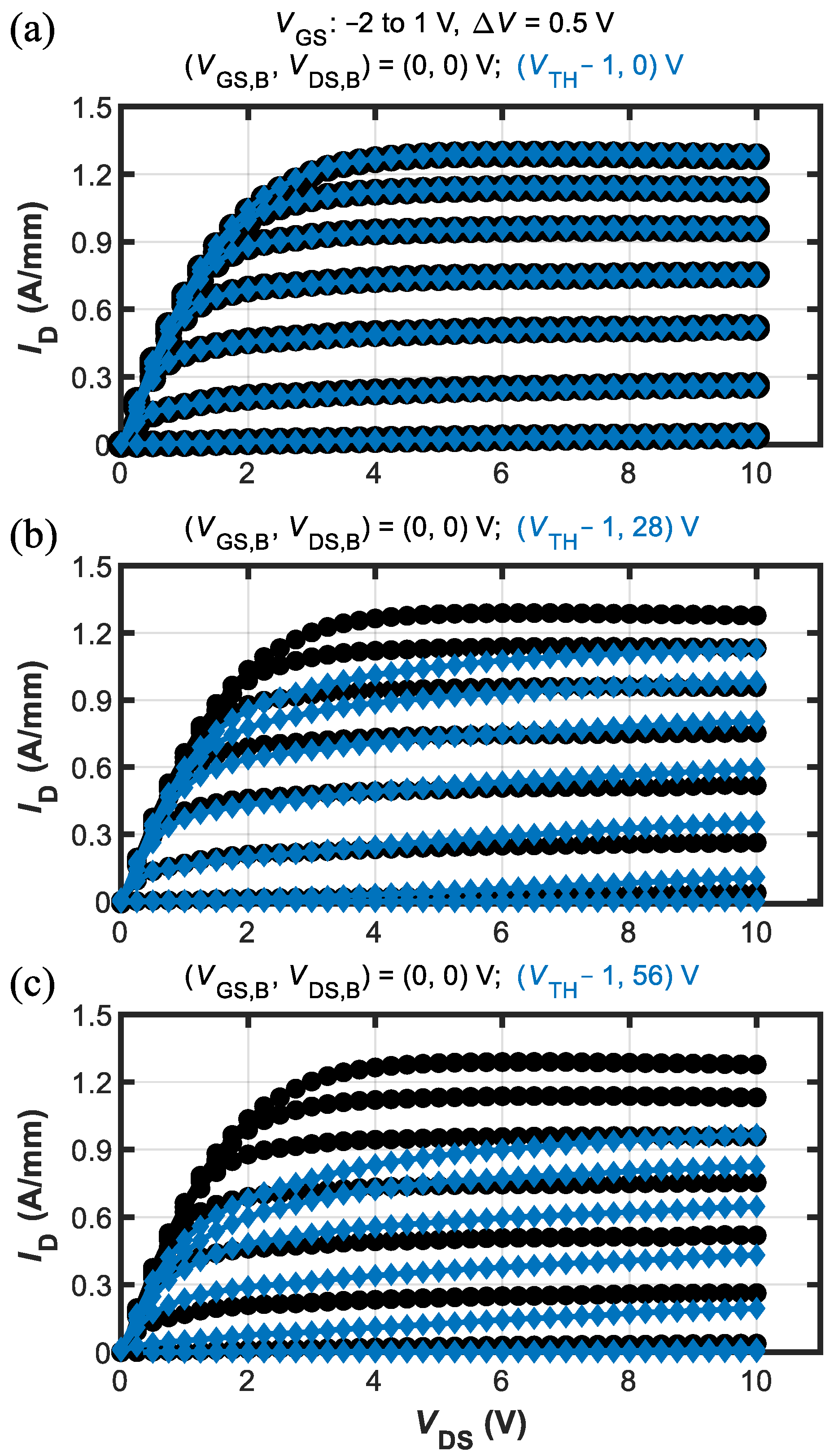
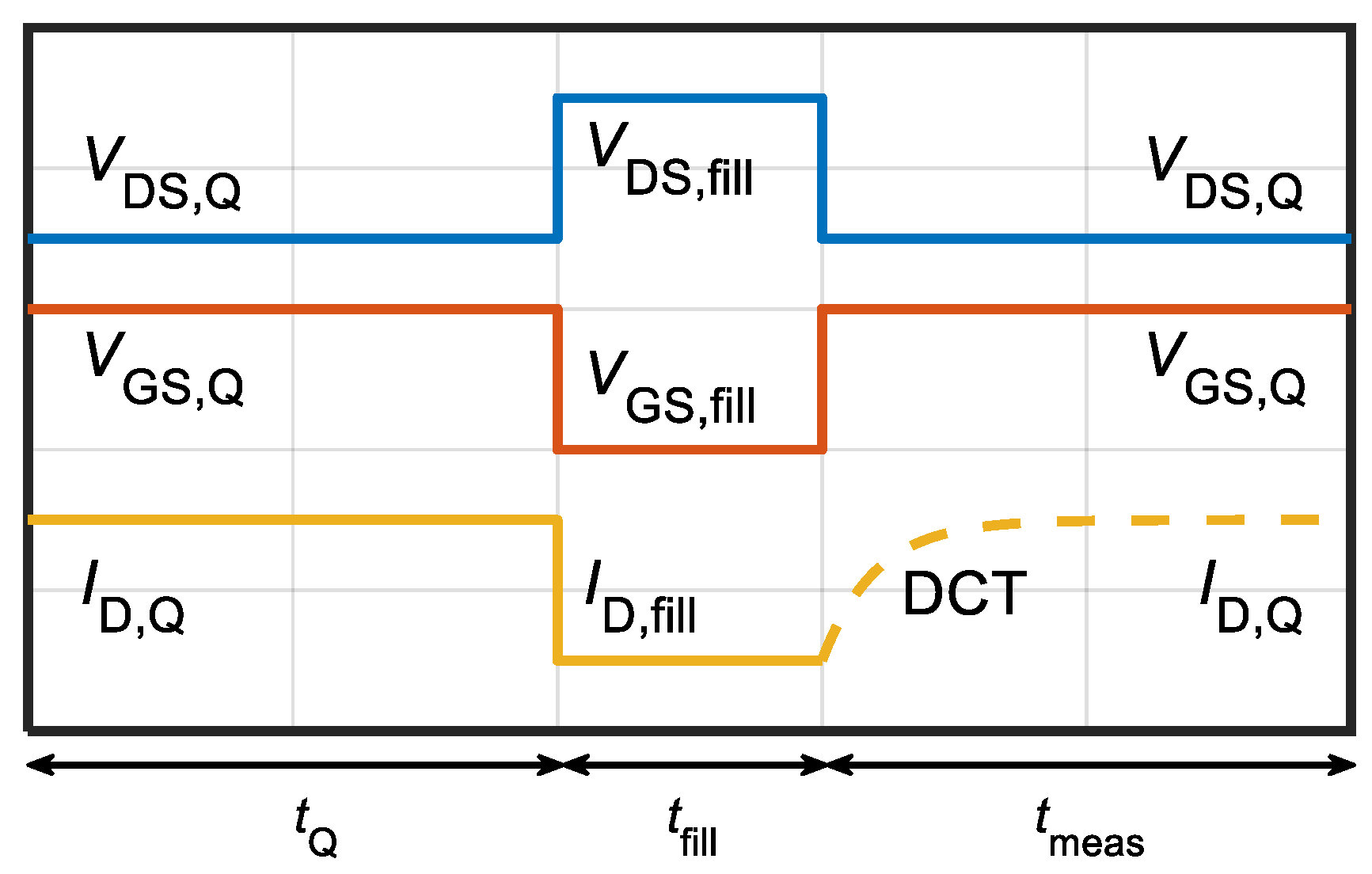

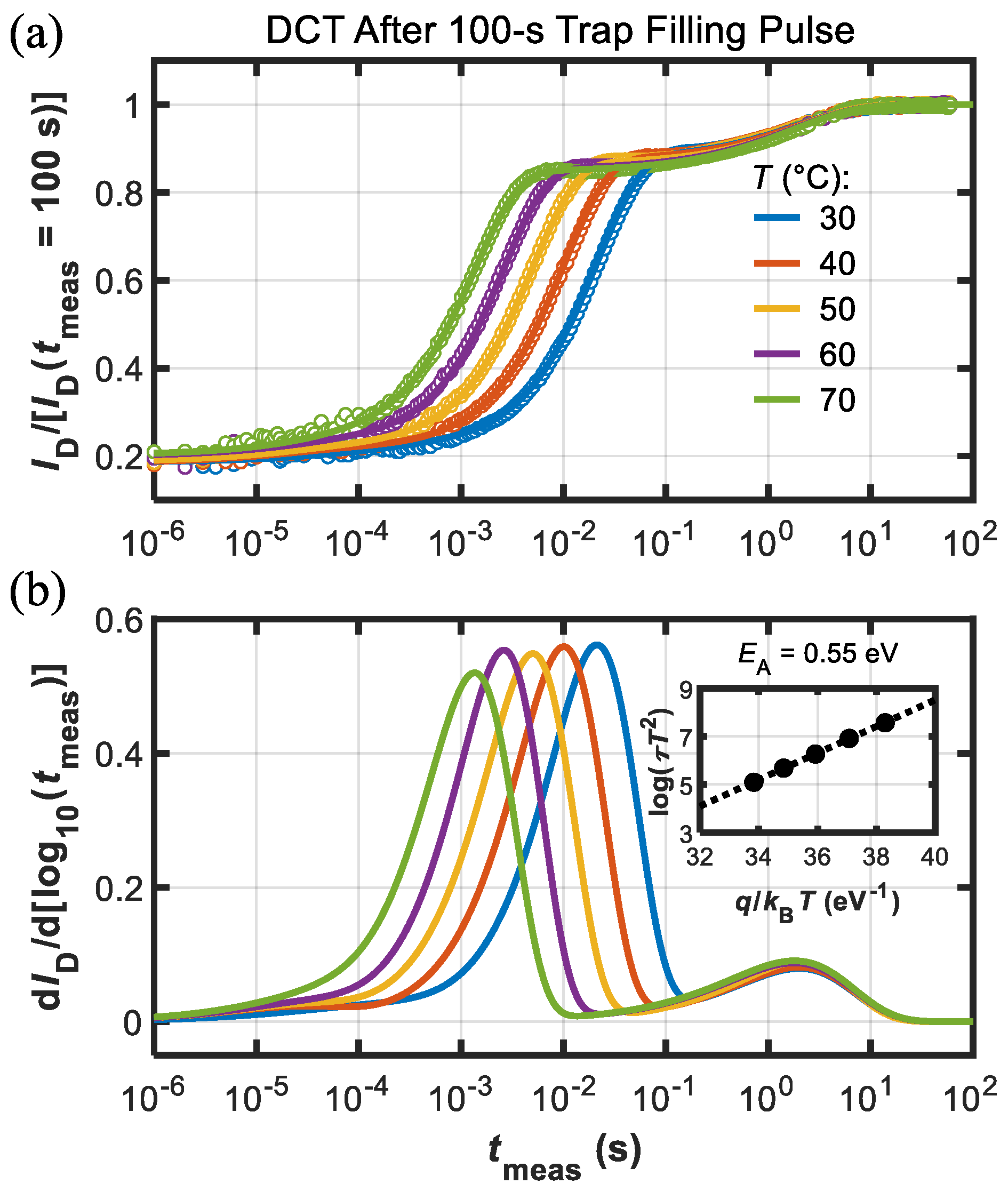
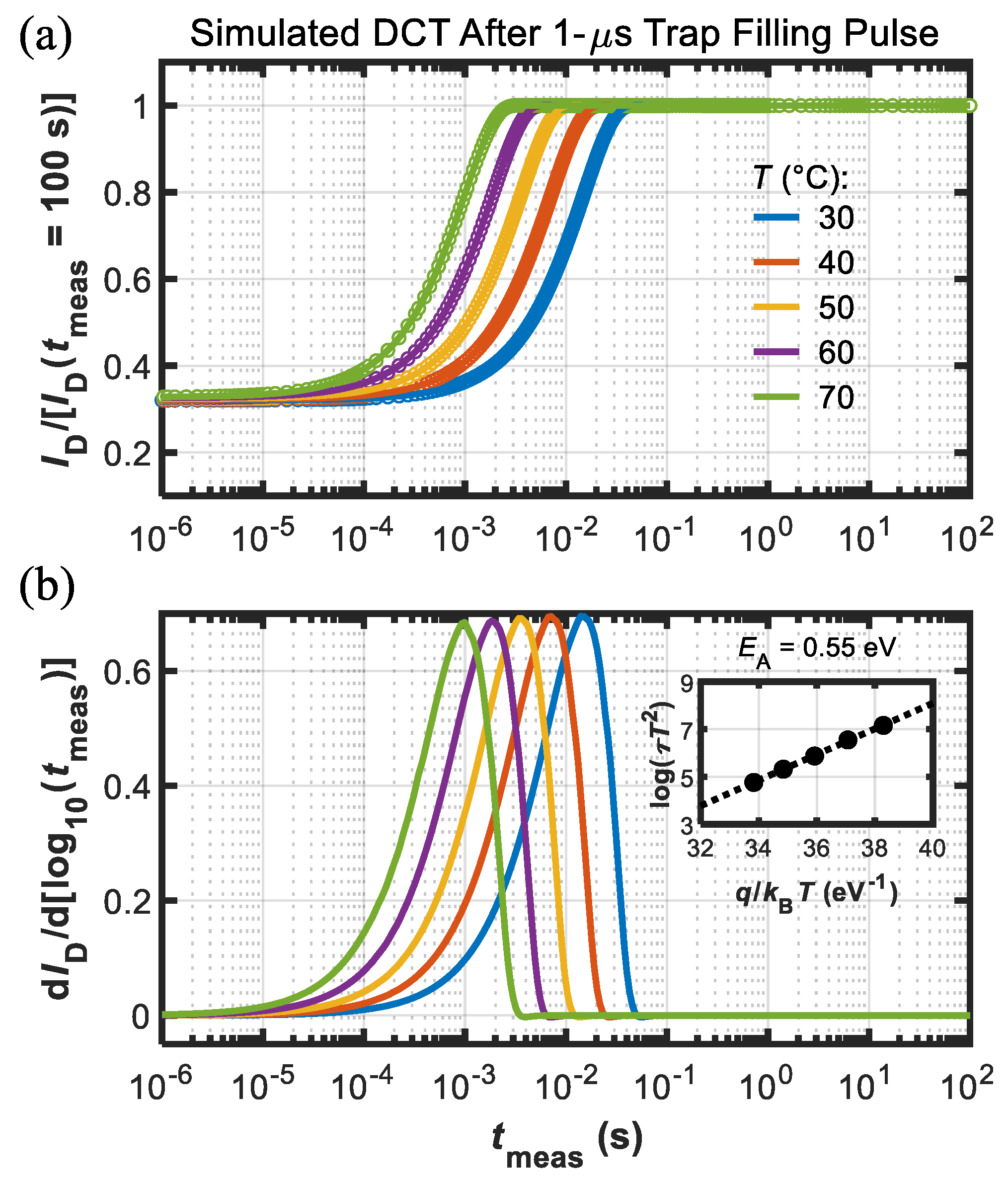
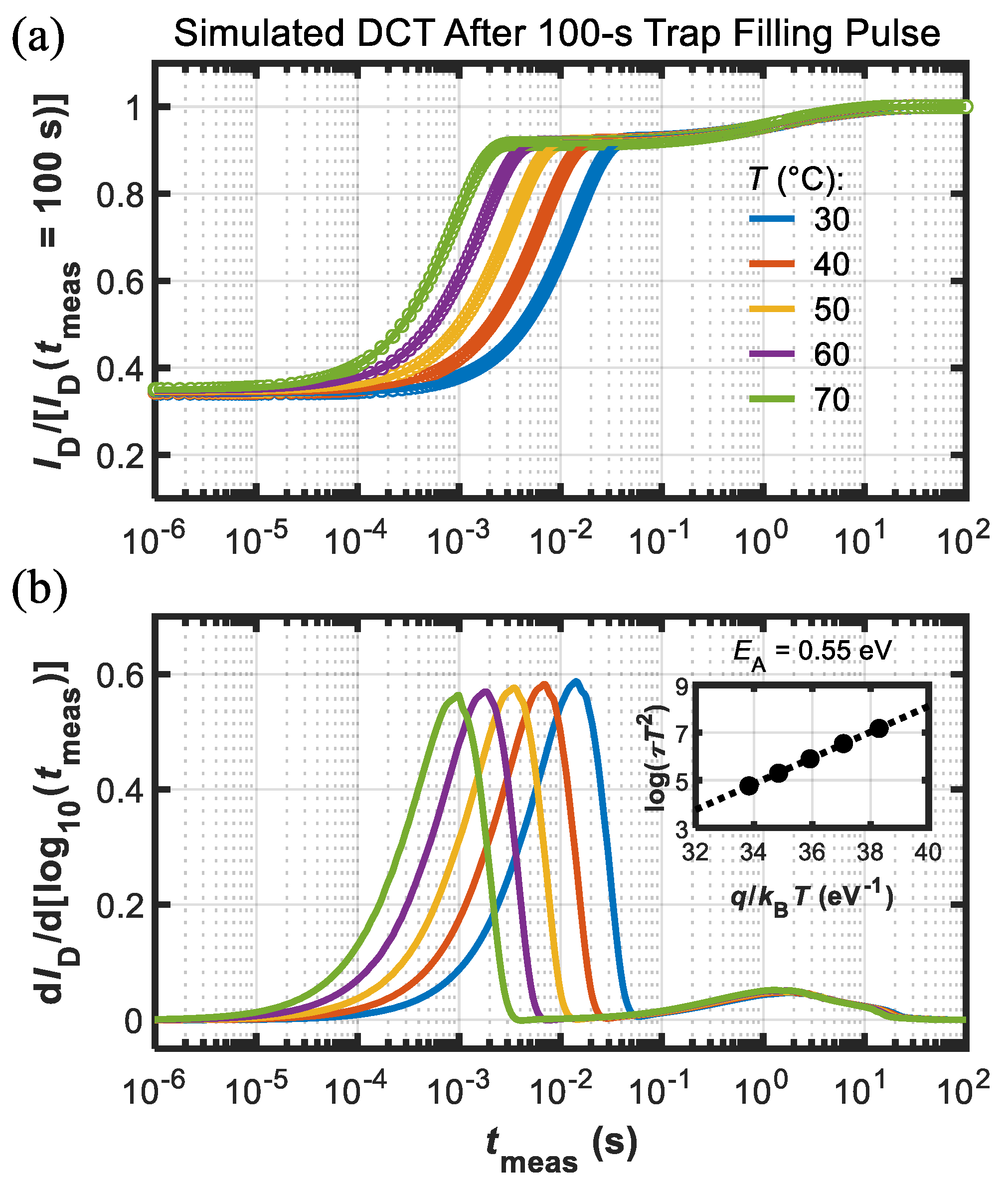
Publisher’s Note: MDPI stays neutral with regard to jurisdictional claims in published maps and institutional affiliations. |
© 2022 by the authors. Licensee MDPI, Basel, Switzerland. This article is an open access article distributed under the terms and conditions of the Creative Commons Attribution (CC BY) license (https://creativecommons.org/licenses/by/4.0/).
Share and Cite
Zagni, N.; Verzellesi, G.; Chini, A. Temperature-Independent Current Dispersion in 0.15 μm AlGaN/GaN HEMTs for 5G Applications. Micromachines 2022, 13, 2244. https://doi.org/10.3390/mi13122244
Zagni N, Verzellesi G, Chini A. Temperature-Independent Current Dispersion in 0.15 μm AlGaN/GaN HEMTs for 5G Applications. Micromachines. 2022; 13(12):2244. https://doi.org/10.3390/mi13122244
Chicago/Turabian StyleZagni, Nicolò, Giovanni Verzellesi, and Alessandro Chini. 2022. "Temperature-Independent Current Dispersion in 0.15 μm AlGaN/GaN HEMTs for 5G Applications" Micromachines 13, no. 12: 2244. https://doi.org/10.3390/mi13122244
APA StyleZagni, N., Verzellesi, G., & Chini, A. (2022). Temperature-Independent Current Dispersion in 0.15 μm AlGaN/GaN HEMTs for 5G Applications. Micromachines, 13(12), 2244. https://doi.org/10.3390/mi13122244







